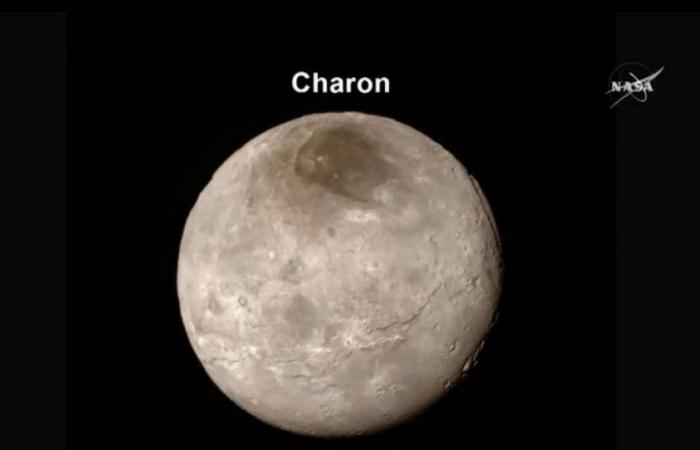The James Webb Space Telescope has discovered carbon dioxide on the frozen surface of Charon, Pluto’s largest moon, researchers announced Tuesday in a study in Nature Communications.
This discovery, along with that of another chemical element, hydrogen peroxide, should help to understand how these icy worlds evolved at the edge of the solar system.
Pluto has long been considered the ninth planet in this system. Until the discovery of similar stars in a region beyond Neptune, the Kuyper belt, which saw it reduced to the rank of dwarf planet in 2006.
These objects are “time capsules allowing us to understand the formation of the solar system”, Silvia Protopapa, of the Southwest Research Institute in the state of Colorado (United States), told AFP.
Charon offers an unrivaled view of these worlds because unlike the other stars in the Kuyper belt, Pluto included, its surface is not veiled by very volatile ices like methane, also explained this first author of the study. .
– “A piece of the puzzle” –
Charon, the largest of Pluto’s five moons, with a diameter of about 1,100 km, was discovered in 1978. Flying over it in 2015, NASA’s New Horizons probe showed a surface covered in water ice and of ammonia, supposed to give it a red and gray appearance. It also showed material rising from the basement.
Which suggested to researchers the presence of carbon dioxide (CO2), a gas essential to the development of life on Earth.
Kuyper Belt objects are thought to have formed from the protoplanetary disk, a large ring of dust and gas that surrounded the young Sun 4.5 billion years ago.
This protoplanetary disk, which is undoubtedly also at the origin of the creation of the Earth, may have contained CO2. But the New Horizons probe had not detected any trace of it.
This “open question” was answered with the James Webb telescope, which has greater detection capabilities.
This conclusion allows us to imagine that if we set foot on the surface of Charon, it would be on a mixture of water ice and dry ice, the solid form of CO2.
Surprisingly the space telescope also detected hydrogen peroxide, according to Ms Protopapa. Used on Earth as a disinfectant, its presence on Charon suggests that its surface is altered by ultraviolet rays and solar winds.
The discovery of these materials brings “another piece to the puzzle” aimed at clarifying the functioning of these distant worlds and the genesis of the solar system, according to the researcher.






